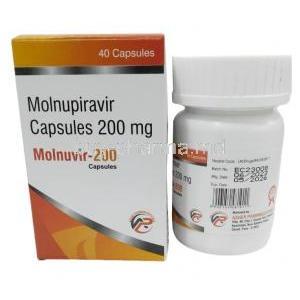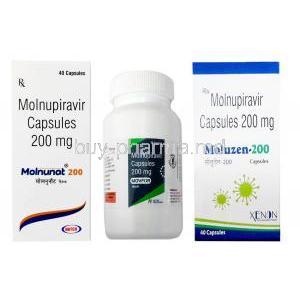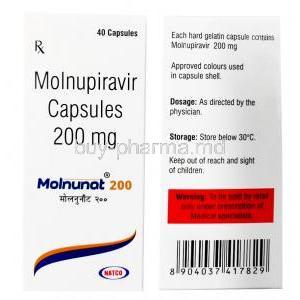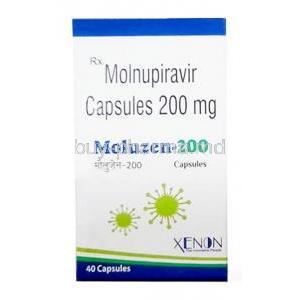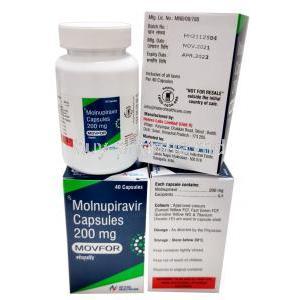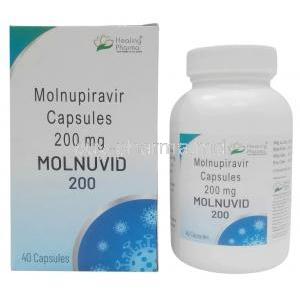Viramune
- Introduction
- Uses
- How it Works
- Off-Label Use
- Side Effects
- Common Side Effects
- Dosage and Administration
- Composition
- Storage
- Interaction
- Warning
- Contraindication
- Careful Administration
- Important Precautions
- Administration to Elderly
- Administration to Pregnant Women and Nursing Mothers
- Administration to Children
- Over Dosage
- Handling Precautions
Introduction
Brief Overview of Viramune
Viramune, scientifically referred to as nevirapine is a medication used primarily for treating HIV. It belongs to a class of drugs called nucleoside reverse transcriptase inhibitors (NNRTIs) which help slow down the progression of the HIV, in the human body.
History and Development
In the 1990s, the introduction of Viramune marked a breakthrough in the medical fight against HIV/AIDS. Extensive research efforts led to the development of this antiretroviral medication. Viramune's arrival opened doors for treatment approaches, mainly when used alongside other antiretroviral drugs.
Place in Modern Medicine
Today, Viramune plays a role in treating antiretroviral therapy (ART). It has proven to be highly effective. It has a positive impact on various aspects of HIV-positive patient's lives. This includes lowering loads, increasing CD4 cell counts, and enhancing overall quality of life.
Uses
Primary Indications for Prescribing Viramune
Viramune is a prescription medicine used in combination with other antiretroviral medicines to treat HIV-1 in adults and children over the age of 6 12. It is a non-nucleoside reverse transcriptase inhibitor (NNRTI) that works by blocking the reverse transcriptase enzyme, which is essential for viral replication 3.
According to the National HIV Curriculum, nevirapine (Viramune) is an effective antiretroviral drug that has been shown to reduce viral load and increase CD4+ cell counts in HIV-infected individuals 1.
For more information on Viramune, please refer to the following resources:
Treatment and Management of Specific Conditions
In addition to treating HIV 1 infection, Viramune is also used to prevent HIV 1 transmission in newborns born to mothers who are positive for the virus. Moreover,, it plays a role in reducing the risk of perinatal HIV transmission.
How It Differs From Other Medications in its Class
Viramune is different from NNRTIs because of its unique pharmacological characteristics. One notable advantage is its half-life, which allows for once-daily dosing after the initial treatment. Another benefit is that Viramune has a likelihood of causing resistance. Moreover, it interacts with other drugs, making it more suitable for use in scenarios involving multiple medications.
How it Works
Mechanism of Action in the Body
Viramune works by blocking the activity of an enzyme called reverse transcriptase, which is necessary for the replication of HIV. This obstruction prevents the conversion of HIV RNA into HIV DNA, effectively stopping the virus from spreading.
Targeted Sites and Receptors
The medication is designed to focus on the HIV 1 reverse transcriptase enzyme by directly binding to its active site. This unique binding process guarantees that the enzyme becomes unable to function, ultimately resulting in a halt in the replication process.
Expected Outcomes for Patients
Patients who are prescribed Viramune can expect positive outcomes: a significant reduction in their viral load, an improvement in CD4 cell counts to strengthen their immune response, and an overall improved clinical outlook, with a decreased risk of progressing to AIDS.
Off-Label Use
Common Off-label Prescriptions and Practices
Although Viramune is primarily recommended for HIV 1, there have been instances where it has been used for viral infections. However, it's important to note that the available data supporting its effectiveness, in those cases, is limited and inconclusive.
Clinical Studies Supporting Off-label Use
Limited research has been conducted to understand how effective Viramune is for HIV viral infections. However, there is no consensus on this matter so the use of Viramune, for infections is considered experimental and should be approached cautiously.
Risks and Considerations
Using Viramune for purposes other than its intended indication requires careful clinical judgment. Factors to consider include the risk of developing resistance, unexpected adverse reactions due to the varying pathophysiology of different viruses, and the ethical considerations of prescribing a drug without solid evidence supporting its off-label use.
Side Effects
Understanding the Difference: Common vs. Rare Side Effects
Similar to any medication, Viramune may cause a range of side effects. Common side effects are frequently reported and typically have mild intensity. On the other hand, rare side effects occur less often but may be more severe or unique.
How Side Effects Manifest in the Body
The potential effects of Viramune can be either widespread throughout the body or limited to certain areas. These effects may appear as nausea or vomiting, skin reactions like rashes, or symptoms like fatigue and increased liver enzyme levels.
Duration and Severity: What to Expect
The majority of the side effects associated with Viramune are temporary. Diminish over time as treatment continues. However, side effects, such as liver toxicity, require immediate medication discontinuation and medical intervention. Patients should be informed about side effects and when to seek medical help.
Common Side Effects
List and Description of Commonly Reported Side Effects
Some of the frequently mentioned side effects associated with Viramune include Skin rashes. These are usually mild, but it is essential to monitor them as they can worsen over time. Nausea: In some cases, this is temporary and can be managed by changing your diet. Increased liver enzymes may indicate possible liver damage, so regular monitoring is necessary.
Tips for Management and Mitigation
Rashes can be controlled by using moisturizing creams and taking antihistamines to reduce these side effects. Nausea can be alleviated by consuming the medication along with meals. Regular liver function tests can help prevent liver toxicity.
When to Contact a Healthcare Provider
It's essential to get in touch with a healthcare professional if The rash spreads, becomes painful, or is accompanied by a fever. Nausea. Worsens to persistent vomiting. Any new or unusual symptoms appear after starting the treatment.
Dosage and Administration
Standard Dosage Recommendations
The typical initial dose for adults is 200 mg daily for 14 days. Then, the dosage is increased to 200 mg twice a day. In the case of children, the dose is determined based on their weight. It is essential to take the medication simultaneously every day to ensure its effectiveness in treating the condition.
Adjustments for Specific Populations
People with liver problems may require adjustments to their dosage. These adjustments are based on monitoring of their clinical and biochemical condition.
Tips for Safe and Effective Administration
To ensure the therapeutic outcome it is essential to always follow the recommended dosage as prescribed. It is advised not to stop taking the medication without consulting a healthcare professional. Regular clinical checkups are essential for an effective treatment.
Composition
Active Ingredients and Their Roles
Nevirapine is a component of Viramune and plays a crucial role in fighting against HIV 1. Its primary function is to block the activity of the reverse transcriptase enzyme, which's responsible for the replication of the virus.

Inactive Ingredients and Their Purpose
Viramune also contains additional substances that help maintain the drug's stability and ability to be absorbed by the body and taste. These substances include materials that bind the medicine, add bulk, and provide a protective coating, ensuring the drug remains intact and accessible for patients to take as prescribed.
Potential Allergens or Reactants
Patients should be informed about allergens present in the formulation. By examining the list of ingredients and considering the patient's medical history, we can proactively prevent any allergic reactions or intolerances.
Storage
Ideal Storage Conditions
Viramune ought to be kept in a room with a temperature range of 20°C to 25°C (68°F to 77°F). It is crucial to store it from moisture and direct sunlight. It is advisable to keep it in its packaging until it is needed to safeguard it from environmental elements.
Shelf Life and Expiration Considerations
Usually, this medicine remains effective for around 2 to 3 years from the time it was made. It's essential to ensure you check the expiration date that is imprinted on the packaging. Taking expired medication can result in decreased effectiveness and possible health hazards.
Handling Precautions to Maintain Potency
When using Viramune: 1. Ensure your hands are clean and dry. 2. Avoid touching the tablet's surface for periods, which could impact its stability. 3. Do not. Break the tablet unless specifically instructed to do so by a healthcare professional.
Interaction
Common Medications That Interact with Viramune
Viramune may interact with medications, including other antiretroviral drugs, antiseizure medications like carbamazepine, and macrolide antibiotics like erythromycin.

Potential Impact of Dietary or Lifestyle Choices
Certain dietary and lifestyle decisions can impact how Viramune is processed in the body. For example, drinking alcohol may increase the levels of liver enzymes, which can be problematic when using Viramune. Patients should aim for a rounded diet and avoid excessive alcohol intake.
Safeguarding Against Negative Interactions
To avoid reactions, it's essential always to let your healthcare providers know about all the medications and supplements you're taking simultaneously. Make sure to go over your medication list during your visits regularly. Remember, never start or stop any medicine without consulting a clinician.
Warning
Recognizing Serious Side Effects or Reactions
Although Viramune is usually well tolerated, there is a possibility of experiencing some side effects. These may include skin rashes, liver complications like jaundice or dark urine, and unexplained muscle pain or weakness.
Conditions or Situations Where Use is Discouraged
Viramune may not be suitable for use in the following cases: Patients with liver problems. Individuals are known to be allergic to the medication or its ingredients—people who have experienced skin reactions from taking this medicine.
Emergency Protocols and Steps
If someone experiences an adverse reaction, they should stop taking the medication immediately. It's essential to seek medical attention or contact a poison control center. Make sure to have records or lists of remedies readily available for the doctor providing treatment.
Contraindication
Health Conditions that Prohibit Use
Viramune should not be used in patients who have liver diseases like cirrhosis or a history of severe skin reactions after taking Viramune or underlying severe metabolic disorders.
Medications or Treatments that Conflict
Before beginning Viramune, it is essential to inform your doctor about any treatments involving certain antifungals, specific antibiotics, or medications primarily metabolized by CYP3A. These substances may potentially have interactions with Viramune.
Avoiding Contraindication Complications
To avoid any complications related to contraindications, discussing your medical history with healthcare professionals is essential. It is also recommended to consult with a pharmacist to review the possibility of drug interactions. It's also advisable to stay updated on the research and guidelines regarding contraindications.
Careful Administration
Special Cases Requiring Adjusted Administration
In situations, like when patients have moderate liver damage or kidney problems, it might be necessary to modify the dosages or monitoring procedures.
Monitoring During Treatment
Regular health checks are crucial when taking Viramune. These checkups include monitoring liver function, conducting blood counts, and keeping an eye out for any possible side effects.
Regular Checks and Assessments
Ideally, it would be best to conduct assessments every month at first. Afterward, healthcare providers can determine if quarterly checks or other intervals are more suitable.
Important Precautions
Safety Measures for First-Time Users
If you're starting to take Viramune, it's advisable to begin with a dose so that you can evaluate how well your body tolerates it. Additionally, it's essential to watch for any indications of reactions. Lastly, ensure you have emergency contact information in case the need arises.
Recognizing Signs of Adverse Reactions
Some initial indicators may comprise Small skin rashes or itchiness. Slight discomfort in the abdomen. The feeling of nausea. Uncommon tiredness or a general sense of unease.
Best Practices for Continuous Use
If you are taking Viramune for a period of time, make sure to stick to your regular monitoring appointments. Stay updated about any side effects and ensure that you always have a reliable supply to avoid interruptions in your treatment.
Administration to Elderly
Adjusted Dosage and Considerations
Elderly individuals might need to have their doses adjusted often reduced because their body processes medications differently, and they are more prone to experiencing side effects.
Potential Risks Specific to Elderly Populations
The elderly population may be more susceptible to liver-related issues or hypersensitivity reactions. It is crucial to conduct evaluations in this particular age group.
Monitoring and Follow-up Protocols
For individuals, it may be essential to have more regular medical appointments that include monitoring liver function, kidney health, and overall physical well-being.
Administration to Pregnant Women and Nursing Mothers
Risks and Benefits During Pregnancy
Although Viramune may be necessary for the health of the mother, it is essential to consider any potential risks to the unborn baby, such as birth defects or premature delivery in comparison to the benefits.
Considerations for Lactating Women
Nevirapine has the potential to be passed on through breast milk. It is essential to have a conversation about the risks it may pose to the baby and explore other feeding options that are available.
Alternative Treatments or Protocols
Different antiretroviral drugs could be taken into account depending on the health conditions of both the mother and the fetus.
Administration to Children
Pediatric Dosage and Safety Profile
The dosage for children, is determined based on their weight. Although it is usually well tolerated, monitoring their growth and developmental milestones is crucial.
Monitoring Growth and Development During Use
Regular checkups for children should include monitoring their growth, evaluating their development, and assessing their health.
Common Concerns and Questions from Parents
Parents frequently have worries regarding the long-term safety of Viramune in children as well as its potential effects on their growth and development. They may also be concerned about handling missed doses or the possibility of overdosing.
Over Dosage
Recognizing Signs of Overdose
Experiencing symptoms like nausea, liver issues, or extreme exhaustion could indicate an overdose. If you notice any effects after taking more, than the recommended dose it's important to seek medical help right away.
Immediate Steps and Interventions
If you suspect an overdose, it is essential to seek medical assistance. Ensure to inform healthcare professionals about the recent dose you took and any other medications you currently take. You may need to be monitored in a healthcare facility to ensure any potential complications are appropriately managed.
Long-Term Impact and Recovery
The outcome after an overdose mostly depends on how the medical intervention is provided and the effective handling of potential complications. Sometimes, patients who receive prompt treatment can fully recover without long-term consequences.
Handling Precautions
Safeguarding Against Accidental Exposure
To prevent exposure, keep Viramune out of the reach of children. After using it, ensure that the cap is tightly secured. If you live in a household with members, take necessary precautions to avoid handling the medication without proper care and prevent unintended ingestion.
Disposal and Waste Management
Make sure to follow the regulations when disposing of expired or unused Viramune. It's important to avoid flushing it down toilets or throwing it away openly in the trash.
Protective Measures for Caregivers and Family Members
If you are responsible for administering Viramune to patients, remember to wear gloves when handling crushed or broken tablets. After administration, make sure to wash your hands. It's essential to stay updated on side effects so that you can identify any early signs in patients.





